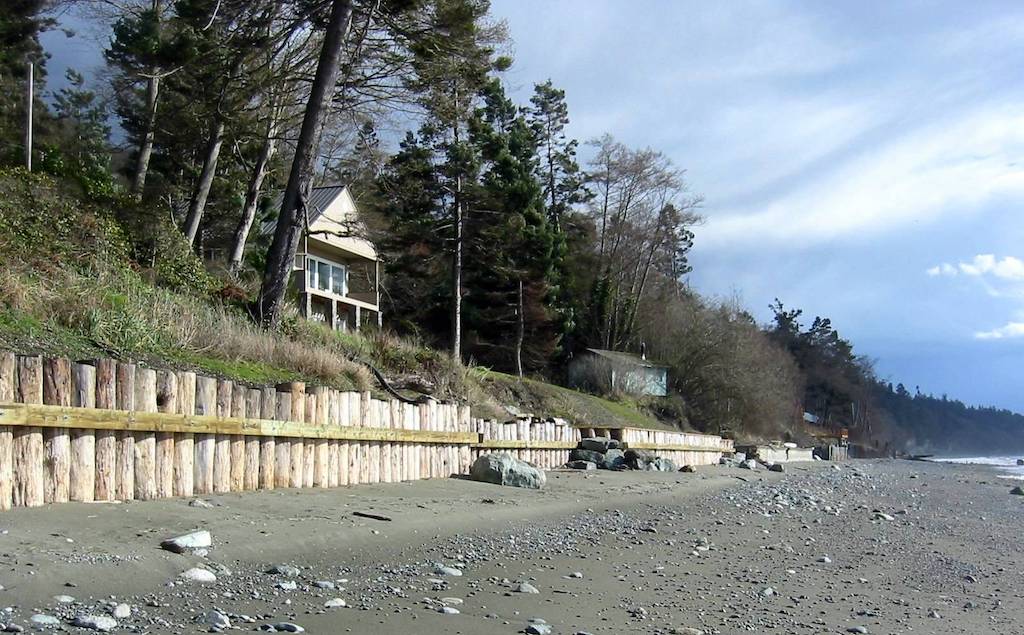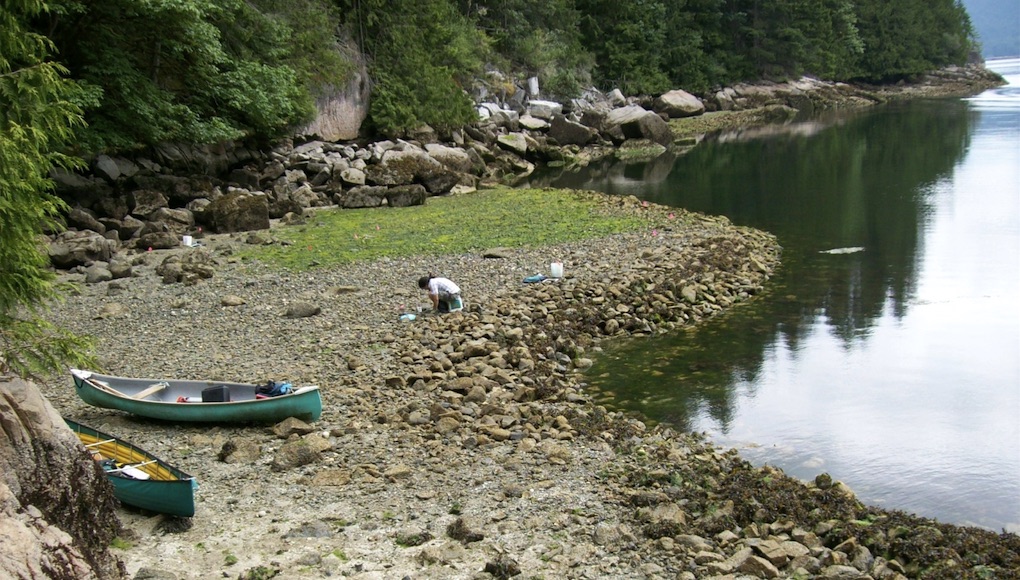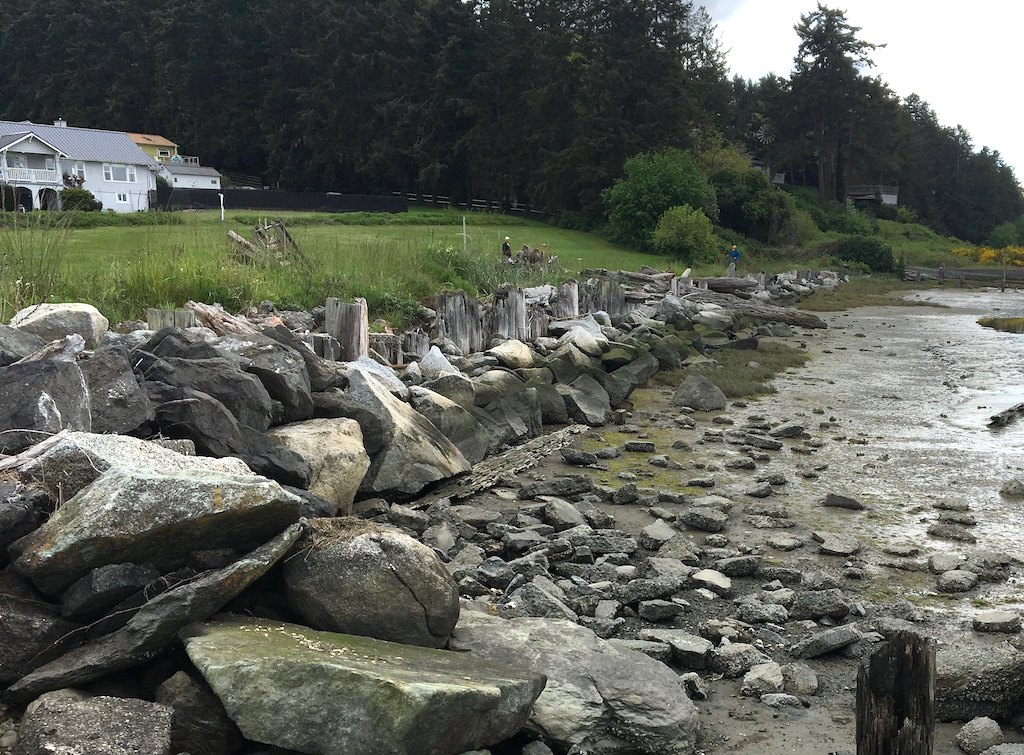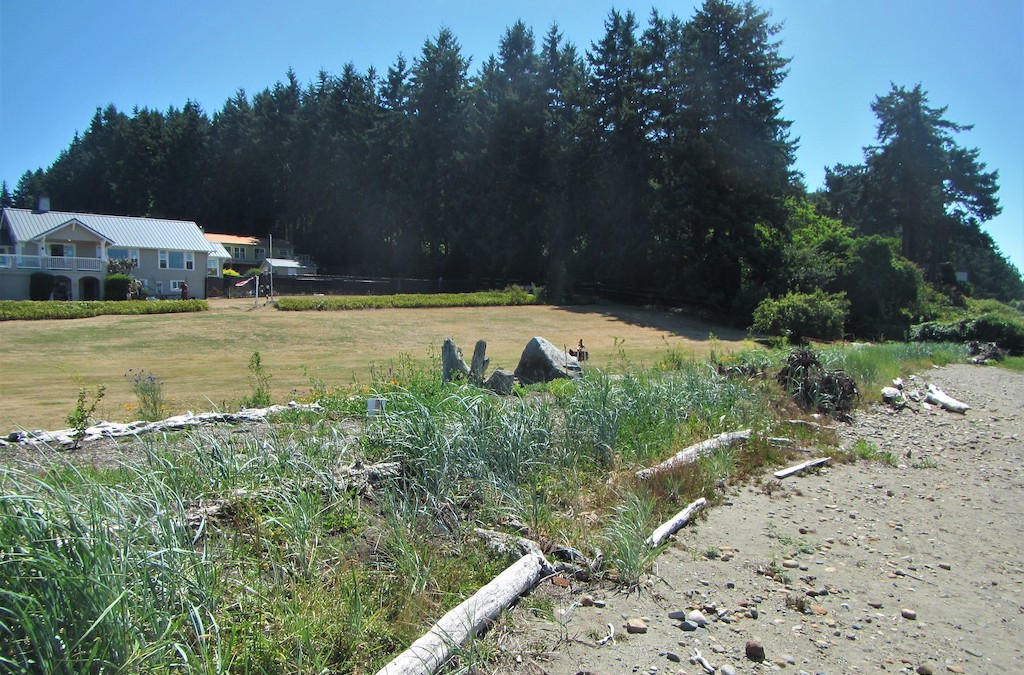For some homeowners, sea level rise may actually seem like a reason to add, supplement, or leave in place exist armoring. After all, isn’t the goal of armoring to stop erosion? The problem is that higher seas result in higher waves and tides, which are more effective at weakening and overtopping bulkheads. In addition, climate change will lead to more and more intensive storms with consequent effects. If it turns out that armoring is ineffective against sea level rise, homeowners may need to find different approaches.
Still, coastal planners such as Faghin acknowledge that the science on bulkheads and sea level rise remains a matter of debate. Studies on the east coast have shown that creating more natural, or sometimes referred to as “living,” shorelines can provide better protection than armoring against erosion caused by rising seas. But little similar research has taken place around Puget Sound. That’s going to require more studies in our region. “We need to be able to demonstrate that bulkheads and armoring are not going to hold up with increased winter storms and that living shorelines work well at withstanding increased storm events to better be able to make an argument for removing a bulkhead,” says Faghin.
Homeowners face an additional problem. Space is essential for a soft shoreline to be effective, but many properties are sandwiched between the road and the water, in part because people replaced small homes with bigger ones on small lots. There is simply no space for them to either move their house away from the shoreline or adapt their shoreline to be more resilient to erosion. “As seas and waves are rising and creating faster and faster erosion, property owners are going to be faced with difficult decisions,” Faghin says.
One result is that people are selling their properties, says Andrea MacLennan, a coastal geomorphologist at
Herrera Environmental Consultantsin Bellingham who has worked for more than two decades with private property owners on shoreline armoring. “Buying their property was an emotional issue. They fell in love with it and then coastal erosion starts. It’s a heartbreak to have to tell people that there is little they can do.” More often though says MacLennan she can offer practical solutions, backed by science, and tailored specifically to homeowners who have the inclination and space, and the money, to change their shoreline.
Like MacClellan, Karin Strelioff of the Thurston County Conservation District also works with private owners. The pair are part of a wave of private and public agency specialists working with the state’s Shore Friendly program. Administered by the Washington Department of Fish and Wildlife and Natural Resources with funding from the Environmental Protection Agency, the Shore Friendly-associated staff conduct site visits, listen to a homeowner’s questions, help them understand how shorelines work, and provide a report on how to manage their property.
A key issue Strelioff has encountered, she says, is people who have moved to the shoreline from urban and suburban areas and are used to meticulous lawns. These new homeowners don’t realize how their management contributes to erosion whether they have armoring or not. Strelioff encourages them to prune for better views and not to clear cut. She points out how roots, shrubs, and trees act like rebar holding together soils. Her goal is to help homeowners create more natural shorelines. “I try to help homeowners become more comfortable with messy,” she says.
Strelioff also notes the challenges of what she calls solutions “in quotes.” “People are living in a very dynamic space. Even if they do everything right, they could still have landslides. But ultimately, our goal is to help property owners work with the land and not against it.”
Policymakers recognize that armor removal may not always be a practical solution. There may be exceptions. We may not need to remove all armor to see ecological benefits but clearly the more bulkheads that are removed the better the impact on the shorelines and shoreline processes.
They also make one additional point. In Puget Sound, armoring is neither effective nor infallible. Years of research on both large -scale structures and individual bulkheads have shown that they tend to fail, which further exacerbates the problem. “We need to change the perception that retreat is losing the battle. We can’t let the alarmist view that armoring is necessary to prevail. The more people see shorelines without armoring, the more they will understand that they don’t need it,” says Andrea MacLennan.





